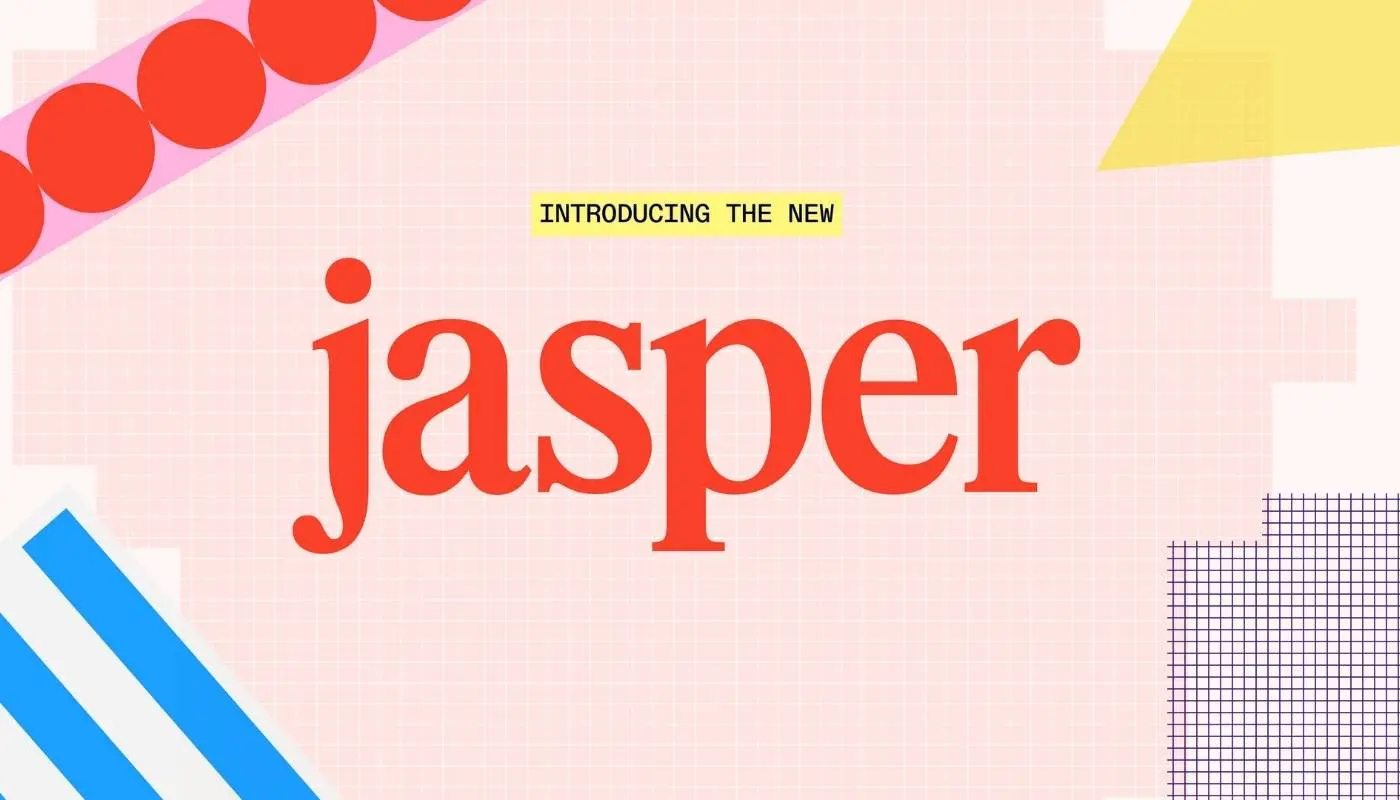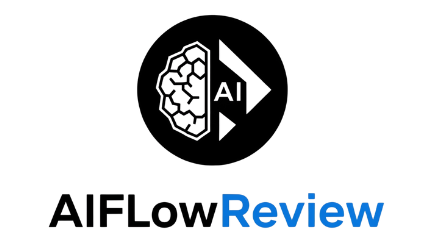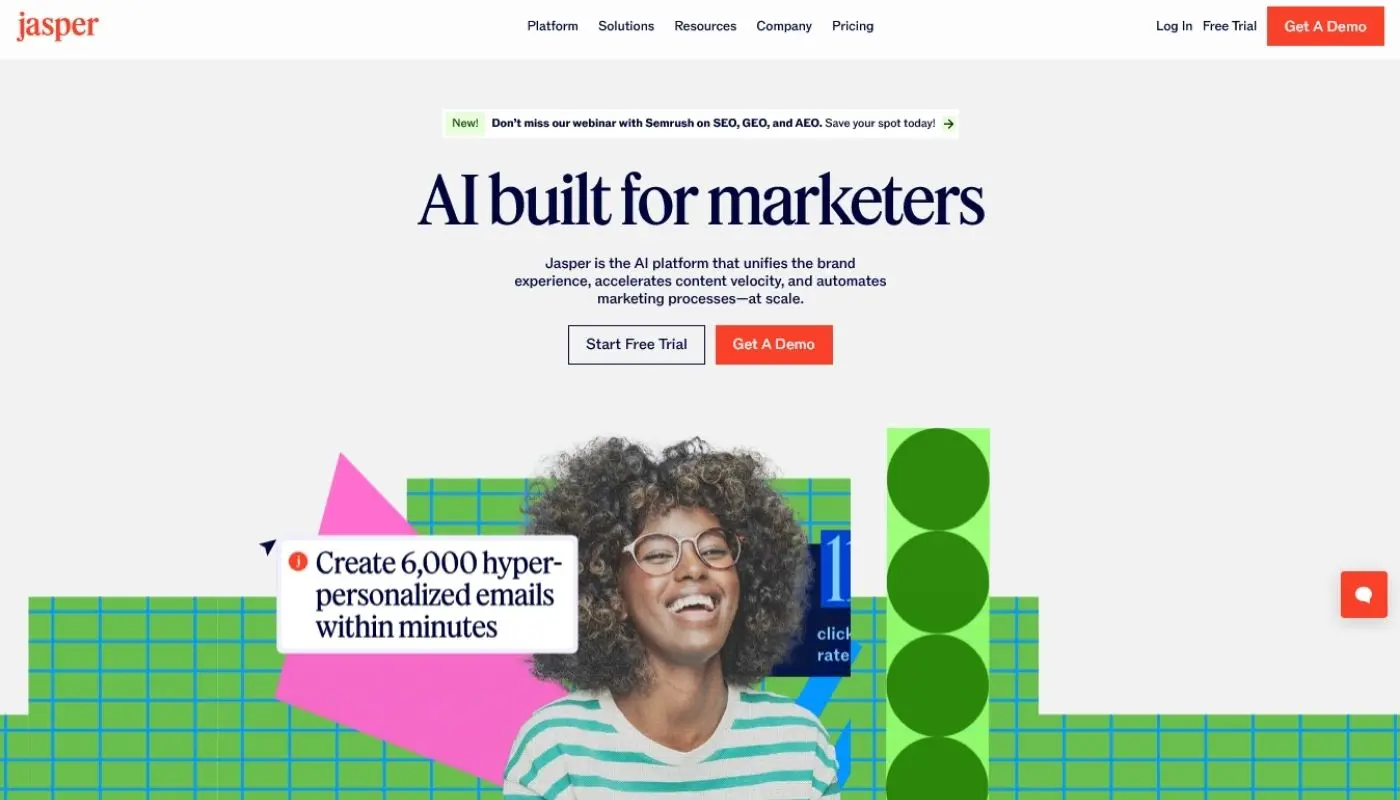Jasper AI stands out in 2025 as a powerful content engine tailored for marketers, agencies, and content professionals. Its platform brings together robust AI writing and collaboration tools, supporting work at scale across blogs, campaigns, and digital assets. In this Jasper AI review, my goal is to present a detailed, transparent look at the platform’s real capabilities—what works, what falls short, and whether it’s still a sound investment as the market grows more competitive.
I’ll break down Jasper’s most important features, its real-world speed, quality, and user experience, along with hands-on strengths and common pain points. Expect clear discussion on everything from templates and brand voice to pricing, integrations, and editing workflow. To give a balanced perspective, this review will include performance notes from recent tests, clear pros and cons, and a fair rating based on both industry benchmarks and my firsthand use.
If you’re seeking clarity on AI-driven content solutions and want a review grounded in actual results, you’ll find what you need here. For those interested in comparing Jasper to similar tools or exploring the broad landscape of content writing software, I also recommend the Top AI Content Writing Tools in 2025 for a deeper dive.
What is Jasper AI?
Jasper AI is an advanced artificial intelligence writing assistant built for content creators, marketers, and businesses that need to produce high-quality, original material at scale. In an era where speed and volume drive digital content, Jasper AI delivers a robust toolkit designed to simplify every stage of the writing process—from first draft to final publication.
Jasper combines the power of natural language processing with a user-centric platform, enabling anyone to create SEO-friendly articles, long-form blogs, ad copy, email campaigns, and social media posts. Its foundation is a state-of-the-art machine learning model trained on vast amounts of real-world marketing and editorial content, letting users generate clear, coherent, and creative output in a fraction of the time traditional methods require. For those researching the broader context of AI writing platforms in 2025, the comprehensive Jasper AI review offers further insights into its functionality and standing among competitors.

Core Purpose and Design
At its heart, Jasper AI was engineered to remove bottlenecks in content creation. The platform is built on many LLM model, like OpenAI, Gemini, Llama, and Claude, which processes your instructions and produces unique, relevant, and grammatically correct text. Whether developing blog content, product descriptions, or email sequences, Jasper is positioned as a digital copilot rather than a full autopilot. You supply the intent, key details, and desired tone; Jasper delivers a rapid, adaptable draft that you can refine and personalize.
For many teams, Jasper AI functions as a central hub. Its interface brings together collaborative editing, brand voice management, and content templates—saving time and driving consistent quality. This focus on usability means even those with minimal technical knowledge can quickly get up to speed, mirroring familiar document tools like Google Docs and Word.
Key Features at a Glance
Jasper AI supports a full spectrum of content creation needs. Here’s a summary of what sets it apart:
- Multi-format generation: Supports articles, social copy, video scripts, email campaigns, and more.
- 50+ guided templates: Covers most common marketing and publishing scenarios.
- Multilingual capabilities: Write and translate content in over 30 languages.
- Brand voice customization: Capture your company’s style and tone for every project.
- Collaboration tools: Invite teammates, share documents, and manage feedback.
- Built-in editing and grammar support: Reduce manual polishing.
- Plagiarism detection: Ensure originality from the start, though plagiarism checks are an added cost.
For an expanded perspective on Jasper’s workflow and template structure, the walkthrough provided by IMNights’ Jasper.ai review breaks down use cases and practical scenarios for both individuals and small teams.
How Jasper AI Differs from Other Tools
Jasper positions itself ahead of common chat-based AI tools by offering guided frameworks, scalability, and broad integrations. Most AI content platforms can write basic copy, but Jasper’s template system and brand settings let users quickly adapt the platform for marketing, academia, or technical writing with minimal manual adjustment.
Unlike some generic text generators, Jasper is explicitly built for deployment across marketing campaigns and editorial projects. It unifies content workflows so that teams can focus on creative direction and fact-checking, not the low-level task of drafting from scratch. Agencies and businesses that value time efficiency, editorial consistency, and scalable output will recognize the advantage here.
Who Uses Jasper AI?
The tool serves a wide range of users, from solo entrepreneurs and bloggers to large marketing teams and eCommerce businesses. If you produce regular blog posts, manage digital ads, or support multiple brands, Jasper is built to adapt to those workstreams. Even educators and students now turn to Jasper to help draft research outlines, academic papers, or refine essays.
Jasper’s value becomes clear in settings where deadlines are tight and expectations for originality and quality are high. This makes it a compelling option in today’s fast-moving, content-driven markets.
For those wanting a deeper technical breakdown of Jasper’s AI model and its impact on marketing processes, Jasper’s own AI marketing platform overview details how the system works behind the scenes.
By breaking down what Jasper AI is, how it works, and who it serves, I hope this section gives you a clear and practical foundation for exploring the platform’s strengths and further details in the rest of this Jasper AI review.
Key Features and Usability
A practical Jasper AI review must go beyond the marketing—it needs to address the daily user experience, feature depth, and speed that define an AI tool’s true value. In this section, I break down how Jasper’s core features, templates, and collaborative environment support high-quality content creation, and why the interface feels both advanced and approachable.
Templates and Content Types
Jasper offers a robust library of over 50 templates, which form the backbone of its fast content generation workflow. These are not one-size-fits-all. Each template is tailored to specific content tasks, letting users efficiently generate:
- Blog posts and full-length articles
- Social media captions (across platforms like Instagram, Facebook, X, or LinkedIn)
- Product descriptions (for eCommerce, marketplaces, DTC brands)
- Ad copy (Google Ads, Facebook Ads, etc.)
- Email subject lines and campaigns
- Website copy (landing pages, about pages, FAQs)
- Video scripts and YouTube outlines
Templates in Jasper help users skip the blank-page stage. Instead of wrestling with structure, I can select the right template, feed in key details or context, and let Jasper produce a first draft within seconds. For marketers running multi-channel campaigns or content managers juggling a content calendar, this system means faster output and more output with better consistency. The depth and variety of these templates place Jasper among flexible solutions, alongside tools like those highlighted in the Gemini AI 2025 Review that also focus on wide format support.
User Experience and Interface
From the first interaction, Jasper’s interface sets a clear tone: clean, straightforward, no distractions. It borrows from the document editor playbook, which helps anyone familiar with Google Docs or Word feel at home. The side navigation panel is always visible, making it simple to switch between recent projects, templates, brand voices, or chat.
The dashboard gently nudges users forward with direct cues (“What do you want to create?”), while the auto-save, content history, and recent files keep all drafts within easy reach. Quick access buttons for starting new projects, importing content, or toggling between templates help me move faster from task to task. Even small touches, such as clear calls-to-action and project overviews, support a workflow that prioritizes productivity without overwhelming new users. If you want to understand more about how usability is unpacked for AI tools, the detailed breakdown in the AI Tool Review Process article is a good reference.
AI Chat and Collaboration
Jasper Chat is the conversational heart of the platform. Instead of filling out static forms, I can type requests, clarify instructions, and get instant output in a natural dialogue. This makes brainstorming or iterating on content feel much more immediate and dynamic compared to traditional editors. Jasper Chat’s contextual awareness helps maintain conversations, remember previous inputs, and adjust to changing needs mid-project.
On the collaboration front, Jasper brings features such as:
- Document sharing (real-time or asynchronous input from team members)
- Brand voice memory (consistency across all outputs)
- Permission controls for safe editing and feedback
For agencies or internal teams, this means seamless review cycles. I’ve found the ability to let several people comment, edit, or push work forward together to be a real timesaver—especially when building brand assets or campaign copy at scale. This kind of built-in collaboration is essential in today’s distributed workflows, a point expanded on in the AI Collaboration Tools for Content Creators feature that shows how shared AI environments impact content velocity.
Jasper’s real-time chat and collaborative features fit right into modern marketing and editorial operations. These are not just add-ons—they’re integral to what sets Jasper apart for high-volume, multi-user teams and demanding solo creators alike.
Performance: Strengths and Weaknesses
The real test for any AI writing tool lies in how well it delivers usable output—and where it falls short. In my hands-on Jasper AI review, I found that Jasper’s performance balances productivity with a few notable caveats. Understanding these strengths and weaknesses helps set the right expectations for anyone considering the platform.
Content Quality and Speed
Jasper’s standout feature is its sheer speed. I consistently produced first drafts in minutes, a pace that’s tough to match with manual writing. For standard blog posts, marketing copy, and social updates, this meant five times the typical output rate with no reduction in clarity—a fact supported by other reviewers, such as this in-depth Jasper AI review at OnSaaS.
- Short-form output: Jasper shines on quick-turn assets like ad headlines, product blurbs, or email subject lines. These drafts arrive clean, grammatically sound, and close to “ready to use.”
- Long-form content: For articles over 1,000 words, Jasper maintains logical structure and cohesion. Flow and readability remain strong even when generating multiple sections in a single pass. I found it especially effective when working from a detailed outline.
- Brand voice consistency: Jasper’s brand settings allow tone adjustments that actually hold up throughout a project. This is useful for agencies or teams wanting to safeguard stylistic uniformity.
Where Jasper really boosts productivity is by handling the basic framework—titles, introductions, bullet points, and even semi-detailed paragraphs—leaving only light editing for those simpler projects. When you’re up against tight deadlines or heavy content calendars, this speed is a real advantage, letting you iterate and publish much faster.
That said, I still recommend running a quick human edit for every long-form piece, especially when the subject calls for nuance or factual depth. Polishing for transitions, voice, or SEO keywords takes only minutes with Jasper’s structure as a foundation. For more on Jasper’s performance in diverse use cases, I found the Jasper AI review from Cybernews aligns with these performance strengths.
Limitations and Common Issues
Even the best AI tools require oversight, and Jasper is no exception. While its content engine is advanced, I frequently notice some recurring issues.
- Repetition: Jasper sometimes repeats points or phrases, particularly with vague prompts or simpler content requests. This means you may need to trim or rephrase parts to maintain variety.
- Oversimplification: With specialized or highly technical topics, Jasper’s output often lacks depth or misinterprets subtleties. Instead of detailed analysis, it tends to favor broad, generic statements that suit general audiences but may fall short for experts.
- Need for fact verification: Jasper does not pull real-time data or verify facts on its own. It relies on learning patterns from its training data, which includes plenty of general knowledge but not always accurate or up-to-date information. Fact-checking remains a critical human step before publishing.
- Plagiarism costs: While Jasper includes a built-in Copyscape integration, each plagiarism check costs extra. This can add up for teams producing at scale, especially with frequent long-form content.
- Editing required: Even minor errors slip through. Transitions, numbers, or unique insights often need tweaking. For more detail on these limitations, check out the honest summary in the Bitcatcha Jasper AI review, which documents repetition and factual mistakes as the most common complaints.
These drawbacks mean Jasper does not replace human writers or editors, especially for specialized, brand-critical, or technical work. Instead, it serves best as a productive starting point, letting you work faster while keeping human attention focused on quality and accuracy. For a full breakdown of these issues and how to address them, the Jasper documentation’s common errors and issues page is a practical resource.
In summary, Jasper excels at accelerating drafts, keeping your workflow flowing, and supporting readable, original content for a wide range of needs. However, routine review, fact-checking, and occasional rewriting remain essential for professional results. For users who want a deeper breakdown of Jasper’s technical strengths and user-reported weaknesses, the BitDegree overview of Jasper AI provides additional firsthand insights.
Pricing and Value for Different Users
Understanding where Jasper AI fits in terms of cost and value is key for any serious buyer or reviewer. In this section, I will unpack the free trial details, core plan structures, and who will gain the most from Jasper based on actual usage patterns. Making a good pricing decision goes beyond the base subscription price; it involves weighing features, support, flexibility, and any hidden or optional add-ons.
 Photo by Leeloo The First
Photo by Leeloo The First
Free Trials, Plans, and Cost Considerations
Jasper AI uses a transparent, tiered pricing model built to scale with your needs. Every new customer can try the platform with a no-commitment free trial. You can test the writing quality, templates, and workflows without having to pay for the first seven days. This trial provides full access, which helps users get a real sense for the tool’s speed and output before making a decision.
After the trial, the core subscription plans break down as follows:
| Plan Name | Monthly Cost (per seat) | Features | Who It Suits |
|---|---|---|---|
| Creator | $49 | Core templates, basic AI content, 1 Brand Voice | Individuals, solo creators |
| Pro | $69 | Advanced apps and workflows, collaboration | Small teams, marketers |
| Business | Custom | Full API, advanced admin, custom apps, priority support | Agencies, enterprises |
- Annual billing options provide moderate discounts, shaving off up to 17% per user versus paying month-to-month.
- The Business tier is flexible, offering custom quotes and dedicated support. Features here cater to large teams, brands with strict governance, or those who need advanced workflow integrations.
What’s often overlooked in a Jasper AI review is the added cost for extras. Key optional add-ons include:
- Plagiarism detection: Jasper integrates with Copyscape, but each scan comes with additional fees.
- Editing tools: The built-in editor supports many use cases, but users requiring deeper checks may need a Grammarly subscription, which also adds to the ongoing cost.
To get a clearer look at feature breakdowns and the latest pricing, I recommend visiting Jasper’s official plans and pricing page or this independent comparison of Jasper AI pricing tiers.
If you like to compare different solutions by cost, supported features, or team scalability, the AI tool comparison chart from AI Flow Review is especially useful for mapping Jasper against other market leaders.
Who Benefits Most from Jasper AI?
Jasper AI’s value becomes most evident when matched with the right use cases and user groups. The tool is designed to support a wide community, but a few stand out:
- Marketing teams and agencies seeking to increase volume and maintain brand consistency find major benefit from Jasper’s advanced brand voice and campaign tools.
- Content managers and publishers busy with blog posts, sales copy, or ongoing campaigns save time with Jasper’s 50+ templates and language support.
- Small businesses and freelancers who need quick draft generation for web copy, ads, or emails get affordable and fast first-draft options.
- Multi-language users—those producing content for global audiences—tap into Jasper’s support for over 30 different languages, bypassing the need for third-party translation tools.
- Academic users and students needing to generate research outlines or rewrite essays in a shorter time frame can accelerate their work, but should plan for in-depth fact checking.
Jasper attracts users who value productivity and consistency over total creative control. For projects where speed and collaboration rank above deep subject expertise, the tool shines. However, in situations requiring highly technical writing, real-time information, or domain-specific reasoning, Jasper can sometimes fall short. In those cases, alternative platforms might better suit content creators needing more specialized or research-driven outputs.
For those interested in reviewing broader trends in AI marketing solutions and how Jasper stacks up, see the current list of top-ranked tools in the Best AI Marketing Tools in 2025.
Ultimately, Jasper AI’s tiered plans and focus on speed, team features, and brand consistency make it a strong choice for most marketing and operational content teams. The key is understanding your workflow, weighing extra costs, and making the most of the trial before committing.
Jasper AI Compared with Other Content Tools
Understanding how Jasper AI measures up to other content solutions is essential for anyone looking to invest in an AI writing assistant. While many platforms make bold promises, Jasper has carved out a clear position by focusing on quality output, robust template support, and marketing-focused features. As you evaluate Jasper for your workflow, looking at how it fits against common alternatives can clarify its real value in daily use.
Jasper AI vs ChatGPT
Jasper and ChatGPT both rely on advanced language models, yet their design choices and applications diverge quickly in real-world use. Jasper is purpose-built for marketing and branded content. Its library of over 50 templates streamlines everything from blog posts and ad copy to email campaigns. ChatGPT handles broader topics and can answer general questions, write code, and hold conversations, but it lacks Jasper’s discipline around brand voice and targeted marketing needs.
A major point in Jasper’s favor is its support for brand consistency. You can set custom brand voices and styles that persist across projects and users. In contrast, ChatGPT requires frequent prompting to match any particular tone or style and often forgets these instructions over longer sessions.
For fast-paced teams, Jasper’s document and collaboration tools create an edge, helping multiple users draft, edit, and finalize material in one hub. While ChatGPT works well for solo brainstorming or quick questions, Jasper has the features that campaigns and agencies rely on for keeping output uniform and organized. Detailed side-by-side breakdowns, such as those in Jasper vs. ChatGPT: Which is better?, reinforce Jasper’s focus on marketing and explain why many teams prefer its suite for day-to-day business content needs.
Jasper AI vs Writesonic
Writesonic competes directly with Jasper, targeting SEO professionals and marketers. Both tools offer templates for common content needs, but the difference lies in control and voice. Jasper goes deeper with custom workflows, branded settings, and a richer range of team features. This makes it a fit for brands willing to invest in tighter control over output style and engagement.
Writesonic is easier to pick up for one-off projects, thanks to its simple interface and affordable plans, but Jasper’s editor gives more room for detailed collaboration, advanced content organization, and mid-project adjustments. For businesses seeking comprehensive solutions rather than quick fixes, Jasper usually comes out ahead—something that’s explored in the Writesonic vs. Jasper comparison for 2025.
Jasper AI vs Type.ai and Other Niche Tools
New platforms like Type.ai are emerging quickly, often offering unique workflows or powerful creative features for specific users. Type.ai is popular among creative professionals for tasks like brainstorming or outlining, but Jasper remains the more structured choice for marketing, editorial, and business applications. Its mature workflow tools, campaign management features, and broad template base give Jasper a utility that most generalist tools can’t match.
If you need wide-ranging capabilities (like digital art or social media scripting), there are advantages to exploring the broader Best AI Chatbots and Virtual Assistants for 2025. Still, for content writing that demands schedule adherence, collaborative editing, and consistent brand messaging, Jasper stands out.
How Jasper Compares on Cost, Scalability, and Workflow
In practical terms, Jasper is not the lowest-cost tool on the market, but it delivers strong value through advanced features and greater control over output. Its scalable pricing tiers fit solo creators up through agencies and larger teams. The addition of workflow tools, project folders, and integrated plagiarism checks (even with extra fees) means less time moving between apps and less risk of error.
To better understand how AI writing assistants like Jasper play a role in broader marketing operations, it helps to review What Are AI Marketing Platforms? A Detailed Overview. You’ll find how Jasper and its peers fit into modern marketing strategies and how each platform’s strengths align with different user needs.
Key Takeaways from the Jasper AI Review
Comparing AI content tools is about much more than template counts or language library claims. Here’s a summary of how Jasper stacks up in the most vital categories:
| Tool | Best for | Collaboration | Brand Voice Control | Templates | SEO/Plagiarism | Cost Range |
|---|---|---|---|---|---|---|
| Jasper | Marketing content, agencies | Advanced | Advanced | 50+ | Built-in | Medium-High |
| ChatGPT | General Q&A, solo projects | None | None | Minimal | None | Low |
| Writesonic | SEO, one-off content | Basic | Moderate | 30+ | Built-in | Low-Medium |
| Type.ai | Brainstorming, creative | Limited | Minimal | Niche | None | Variable |
If you’re choosing an AI tool for steady, branded content with strong editing support, Jasper is often the highest-performing pick, especially in high-output environments. For those seeking a broader look at current tools, reviewing guides like the Beginner’s Guide to AI Tools can help pinpoint what fits your needs now and where Jasper fits in the wider market.
Conclusion
Jasper AI stands as a reliable productivity tool for anyone who needs fast, consistent content generation. Its strengths show best in marketing and editorial use, where speed and structure can set the pace for high-output teams. The platform makes it easy to organize, draft, and revise projects thanks to a clean interface, brand voice options, and template-driven workflows.
However, real technical topics, nuanced arguments, and fact-heavy content still need careful review. While Jasper enables creative flow, it never replaces the editor’s role. Repeated prompts and surface-level coverage sometimes require extra refinement. The added cost for plagiarism checks is a realistic trade-off for peace of mind.
For brands, agencies, and content managers, Jasper AI is a practical choice if you value volume, team collaboration, and branded output over deep subject mastery. Solo users with straightforward content needs can see quick returns, while larger organizations benefit from scalable tools that reinforce company voice.
Before committing, weigh Jasper’s capabilities against your expected workload and standards. If you want more context about how industry leaders define excellence in AI tools, see the Top Rated AI Tools Explained.
Jasper’s score sits solidly above average for usability, speed, and flexibility. My verdict: it earns a strong recommendation for its target users, with the caveat that you keep human review part of the workflow.
Thank you for reading this Jasper AI review. I invite you to share your experiences and explore how other top tools can fit into your content strategy.

















